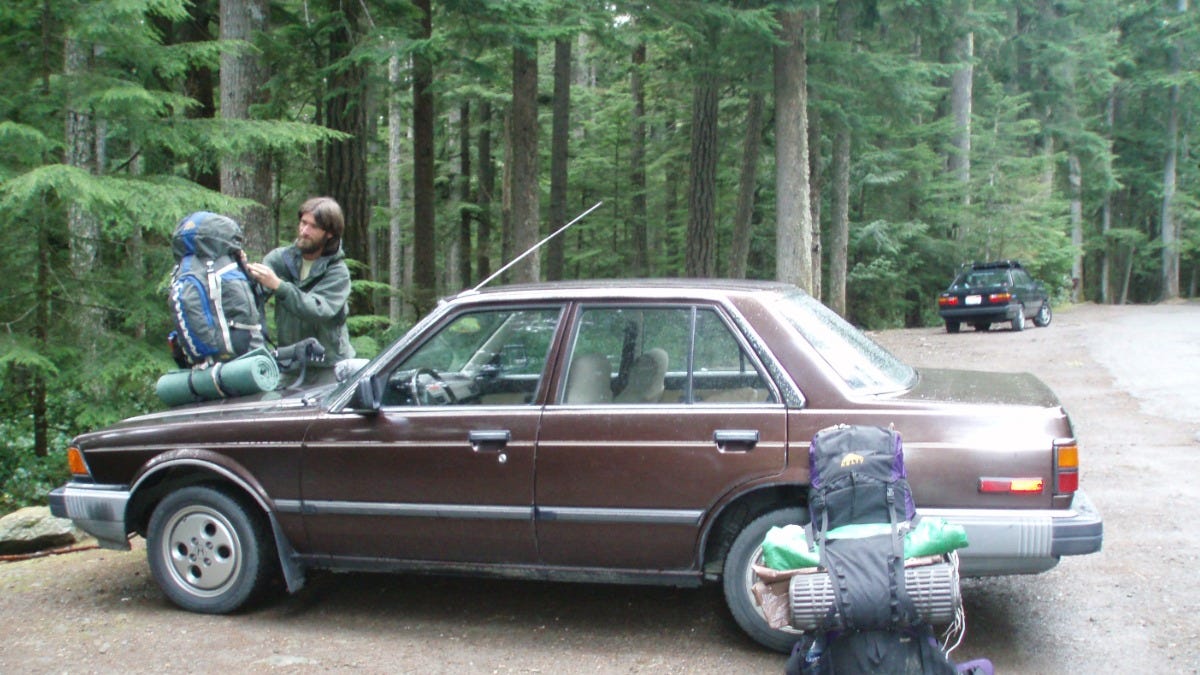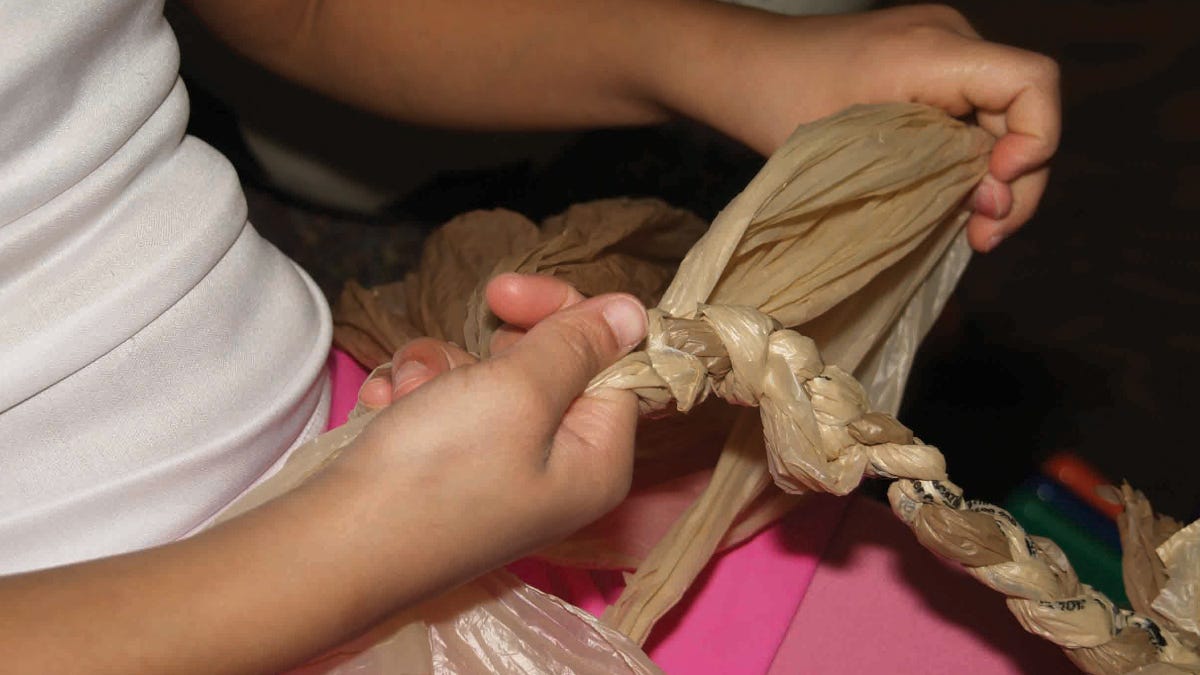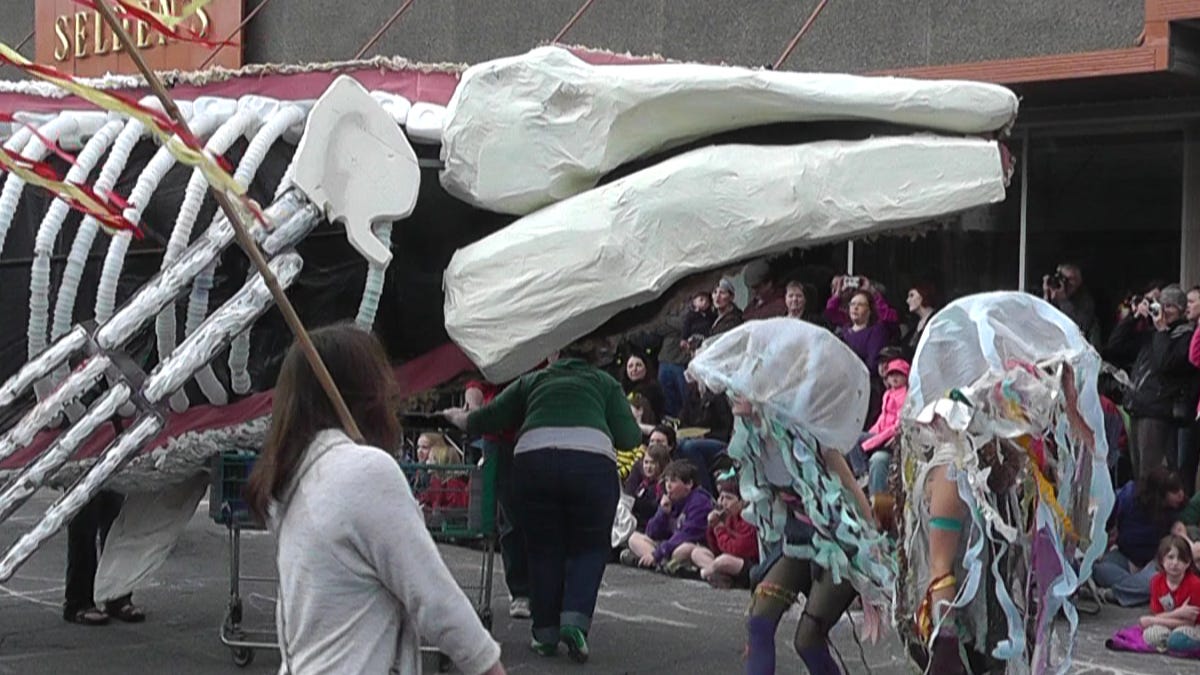Learning to Fly: Breakdowns and Breakthroughs Project (Offering 6.2)
How a creative breakdown led to a breakthrough—and a whale big enough to change the law.
Sometimes failure opens the only door we’re meant to walk through.
In this offering, I share a breakdown that nearly broke me—and the unexpected art project that helped shift public policy, empower hundreds of kids, and chart a new course for my work as an artist.
(This is offering 6.2 of Eclosion: An Artist’s Path to Power and Peace. If you’re new here, start at the beginning. Or visit my Memoir Hub for a full table of contents with links.)
A Necessary Failure
Between the Olympia Rafah Mural Project and Delphinia, I was continually stretched outside of my comfort zone. This built both my artistic and communication skills and was not a neat and tidy process. I wasn’t sure about working or living in community yet. Art, on the other hand, felt essential.
After the completion of Phase 1 of the Olympia Rafah Mural Project, I decided to become an artist full-time. I was smart about it, taking business classes from Enterprise for Equity, a local organization that taught me the ins and outs of running a small business. I made a business plan, and it seemed there was a market for my work. My plan was to paint murals and sell pottery at local art fairs and festivals.
It probably won’t come as a big shock to anyone that I completely failed.
Making your living as a small business owner is tough. If that business is based on making art, it is even harder. There are so many ups and downs and a LOT of uncertainty, especially when just starting out. I was already emotionally unstable, and with the added uncertainty of trying to make my living as an artist, it was too much.
I was in a hard place—depressed, unable to pay my rent, going to the food bank for groceries. I even had to ask for help to keep my car running. Asking for help was the last thing I wanted to do. It felt like the ultimate concession that I was a failure, something I didn’t want anyone to see. I loved that car, though. It was an old brown Honda Accord, literally a classic. I bought her for $600 when I returned to Olympia and named her Brown Beauty. She was probably only beautiful to me, but that car ran and ran and ran. Really, all she needed was new tires, but I couldn’t even afford that.
I ended up doing the one thing that I had railed against since college, I took the dreadful J-O-B. This wasn’t just any job. I’d had plenty of seasonal jobs and jobs with non-profits over the years. This was a permanent government job, complete with health insurance and decent pay. It was security. I even got to do meaningful work as an environmental educator, working with schools to set up food composting programs, helping them increase recycling and reduce their use of disposable products.
My fear, and yes, this is a fear that comes from a place of privilege, was that if I took such a job, I would be trapped and never leave. Trapped by steady income and medical insurance, I’d become complacent and never succeed as an artist. But I desperately needed the stability this position would provide me. It was a half-time position, where I would earn enough to pay my bills and still have time to make art on the side.
It wasn’t what I wanted. It was exactly what I needed.
Ironically, it was through that job that I finally figured out how to bring art and science together in a way that I had been striving towards for years—a way that resulted in real change. My first large-scale collaborative art project, now more than 10 years ago, was integral to banning single-use plastic bags in our county. This project’s incredible success ignited a journey beyond my wildest dreams. An expedition more akin to a challenging hike through all kinds of terrain—punctuated with mosquito-infested swamps, peaceful forest paths, grueling climbs, and incredible mountain vistas—than anything I could have mapped out.
The Plastic Whale project
A few years into my time working for Thurston County, my supervisor gave me an opportunity to create some new programming for youth. At the time, Thurston County was going through a public outreach process to decide if the public wanted to ban single-use plastic bags. I jumped at the chance to create a project empowering youth to ditch the plastic bags and choose reusable. While researching ideas for this workshop, I learned that in the previous year, April of 2010, a gray whale washed up on shore of the Salish Sea in West Seattle, its stomach filled with plastic bags and other trash.
Naturally, my first thought was, “Let’s make a life-sized gray whale out of plastic bags and other trash!”
Gray whales have the longest migration of any whale, 12,000 miles from the icy waters of the Arctic to the warm lagoons of Baja, Mexico, and back again. Only a few visit the Salish Sea, so finding a dead one was noteworthy. While performing the necropsy, scientists found approximately 30 plastic bags and other plastic and non-plastic trash in the whale’s stomach. While the scientists could not conclude that the plastic bags had killed the whale directly, the bags likely contributed to its poor health and ultimate demise. It is estimated that annually over 100,000 marine mammals die of ingesting plastic each year and it is becoming more and more common for marine mammals to starve because their bellies fill with plastic[1].
I still find it hard to believe that when I proposed creating a life-sized gray whale from plastic bags and other trash, my supervisor said Yes! This project took place in 2011 and 2012. At that time creating collaborative art for change was very much outside of the box, especially when it was funded by a local government. My supervisor took a big risk letting me take on this project. And while she did say yes to my proposal, she did not give me any additional funding for the project. That worked out alright, since my time was covered, and the Whale was made out of 95% upcycled trash.
The Plastic Whale Project combined art and marine biology with the goal of reducing the use of disposable plastic bags and other plastic trash. I worked with over 900 youth and adults in our community to build this life-sized gray whale, coupled with presentations about the impacts that plastics have on our oceans and our communities. Each participant pledged to use fewer plastic bags and was given a reusable bag with a design of our whale on the side.
Do you remember having a giant bag of plastic bags in your closet or under your sink? Or maybe you live in a community that hasn’t yet banned plastic bags, and you still do? There were always SO many bags and you never knew what to do with them all! For this project, I made good use of those bags, inviting elementary students to bring all their plastic bags from home. At the beginning of each workshop, we would form a circle, take out all the bags, and pile them into a mountain of trash in the middle. They were piled so high, we could hardly see the people on the other side of our circle! We used this powerful imagery to help us visualize how many plastic bags—plastic bags that on average are only used for 12 minutes before they are thrown out—were used every single day in their classroom, school, city, country, and throughout the entire world.
During the workshops we talked about how plastics harm ocean animals and explored solutions. We talked about alternatives to using plastic bags and ways they could help to keep plastics out of the ocean.
Then it was time to make art. Students participated in building the whale by cutting and braiding the plastic bags they brought from home. These were simple activities that everyone could take part in. I must have taught 500 kids to braid that winter. I was surprised at how much the students got into the braiding. Some just didn’t want to stop, and we’d end up with these long plastic bag braids stretching across gymnasium floors. Together, we made over 6,000 feet of braided bags.
I took all those braids and worked with 100 middle school students, who turned the plastic braids into what would become the skin of whale. Assembling them as if making a rag rug, they made shapes out of the braids, using different colored braids to make a map of the Pacific Ocean. A plastic braid spiral in the middle represented the Great Pacific Gyre, which many people now refer to as the Great Pacific Garbage Patch. We positioned the spiral over the stomach of the Whale to symbolize how plastic gets stuck in the bellies of marine mammals. The spiral also showed how plastic that gets into the Salish Sea is caught in ocean currents and washed all the way to the middle of the Pacific Ocean, away from our eyes. From our homes, to the Salish Sea, to the Pacific Gyre, to the smallest fish and greatest whales, our choices impact our planet.
Simultaneously, I worked with a high school art class both in their classroom and in the community art studio, where we created the visible skull and skeleton of the Whale. These students had freedom to design the different elements how they saw fit: ribs, vertebrae, skull. They collected juice cups and forks from their school cafeteria and milk jugs from local coffee shops.
What amazes me about using art in this way is that participants learned about some difficult, depressing topics—no one likes to hear how the plastic we use kills thousands of marine mammals each year—yet were able to continue their day feeling inspired and empowered, instead of depressed or hopeless: because they took immediate, creative action.
By making art in response to what they learned, participants were able to process through their emotions. If I had only told them the doom and gloom, without giving them an action to take, a way to create change, they might have been stuck in a place of apathy. Because the Plastic Whale Project was a public art piece, participants were able to take it to the next level—they became the teachers and helped spread awareness.
What we got out of this project was not just an exceedingly cool art project: we got an incredible story—the story of more than 900 people working together to create something bigger than any one of us could do on our own. And it was not just one story—each participant had their own story to share.
Can you feel the power in this?
We unveiled the Whale for the Procession of the Species Celebration that spring. The Procession of the Species is a joyous, artistic pageant, embracing the languages of art, music, and dance to inspire curiosity, appreciation, and protection of the natural world. It features huge artistic creations, marching bands, and so much more, drawing thousands upon thousands of people to the streets of downtown Olympia.
Imagine, if you can, a life-sized gray whale, swimming through the streets of Olympia, mounted on shopping carts, while humans dressed like krill and jellyfish made from upcycled plastic danced around it.
During the Procession, a young girl ran into the street while the Whale was swimming by and said, “Excuse me, excuse me! Did schools help to make this?”
I said, “yes.”
“Did my school help to make this?”
I said, “yes,” and she literally jumped up and down for joy as she ran back to her family to show them what she had helped to create.
After the Procession, we displayed the Whale at a prominent local theater, The Washington Center for the Performing Arts. There we held an art reception, inviting the public with special invitations to all who helped create the Whale. That same young girl showed up with multiple generations of her family, eyes alight with wonder as she saw the Whale up close for the first time, her family listening raptly as she shared her story with them.
As if the direct impact on that one child wasn’t enough, the Plastic Whale Project helped to shift public opinion and pass a ban on single-use plastic bags. Thurston County, and the cities of Olympia, Tumwater, and Lacey, all adopted the plastic bag ordinance in 2013, effectively banning single-use plastic bags in all four jurisdictions. Ramping up to that decision, I received multiple invitations from council members to bring the Whale to their council meetings to help sway their constituents with its powerful visual message. I unfortunately had to say no, as moving the Whale was…challenging.
All of this was so incredible and important to my journey as an artist, but it was the middle school youth who helped me understand the real depth of power in this project. Middle schoolers, kids twelve, thirteen, and fourteen years old, said they felt personally responsible for the ban on bags.
There was an opening inside of me as I thought of myself at age thirteen—how scared and powerless I felt—how I just wanted to disappear. Suddenly I had the ability to create an experience where kids felt they had the power to create change in their government. In that moment, I knew there was no going back for me. I could no longer return to simply creating art for art’s sake, or even just for my own emotional processing. I had a new definition of what success looked like for me. Creating change with art—and helping others realize their potential to create change—became my passion.
I learned so much from this project. I learned that art breaks down barriers; it opens hearts. It allows people to see, if only for a moment, something they never saw before. It gives participants the lived experience of making something so much larger than any one of us could do on our own. I watched those directly involved in this collaborative art project move from “I could never do that” to “We can do it if we work together, so why not?”
Almost by accident, I learned how to make real, visible change. After completing the Plastic Whale Project, it was as if all the limits that I had imposed on myself were removed. I suddenly saw so many possibilities to create art and make a real impact.
Have you ever turned a personal failure into something bigger than yourself?
I’d love to hear your story—or just let me know you’re here.
[1] https://wwf.org.au/blogs/plastic-in-our-oceans-is-killing-marine-mammals/



